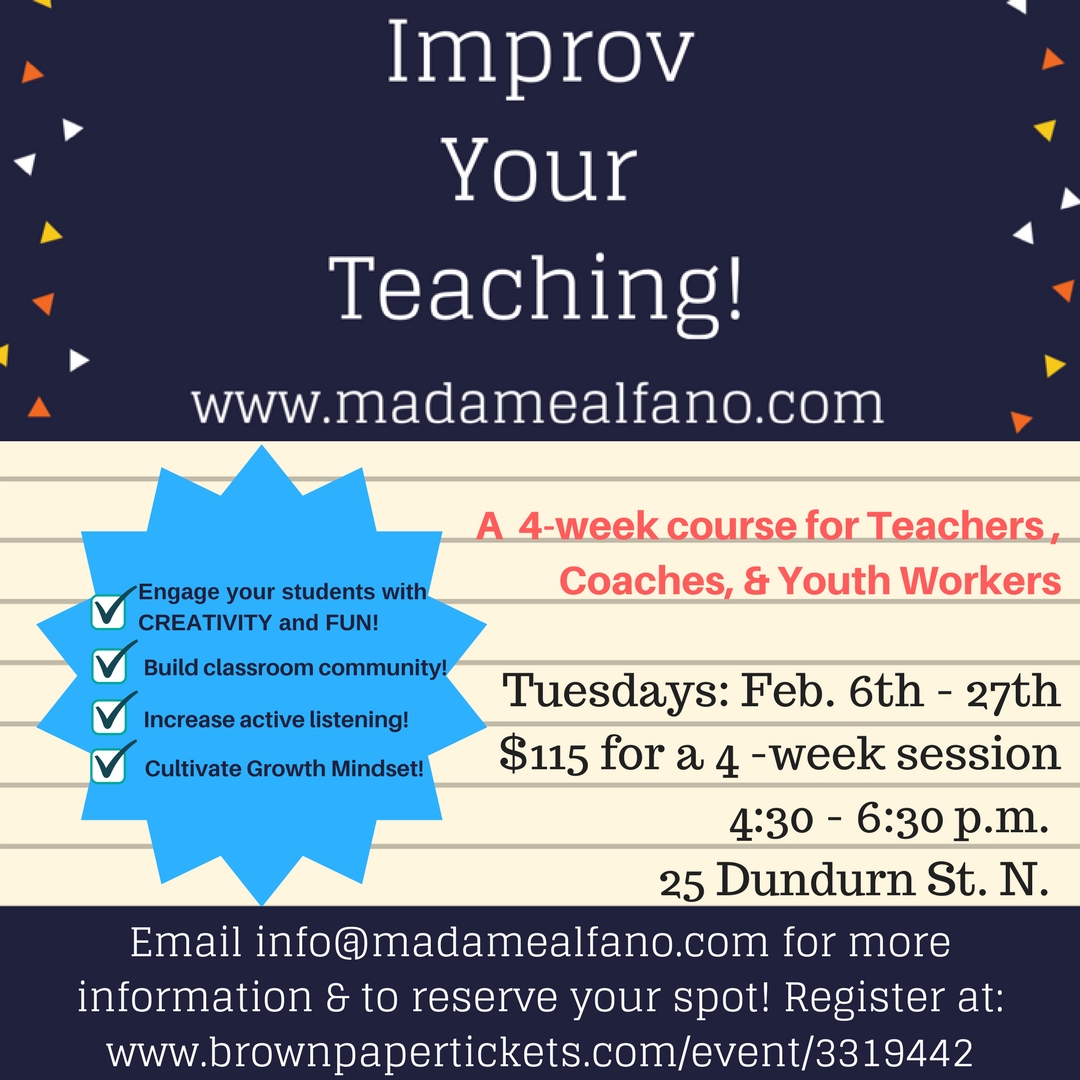Bonjour et bienvenue!
As a French immersion teacher and improviser, I’ve made a goal to share the ways in which the joy of improv comedy has transformed my teaching practice. We have all had to adapt over the past few years. If you are looking for strategies to engage your students and build community, you’ve come to the right place!
The goal of madamealfano.com is to provide educators with improv games to share with their students to accomplish a wide variety of classroom goals (e.g. listening games, team-building games, applying target vocabulary, building confidence, etc.). There will always be descriptions in English, as well, in case you’re not a second language instructor, and simply wish to motivate your students or team with the excitement, community and FUN of improv!
Aside from teaching at the elementary level, I volunteer as the Educational Lead at Staircase Improv in Hamilton, overseeing weekly classes, and delivering workshops for community organizations in the city. I am truly passionate about the benefits that come from saying “yes, and” more often in life! If you would like to connect, please send me an email at info@madamealfano.com.
À la prochaine,
Madame Alfano
@madamealfano on Twitter


